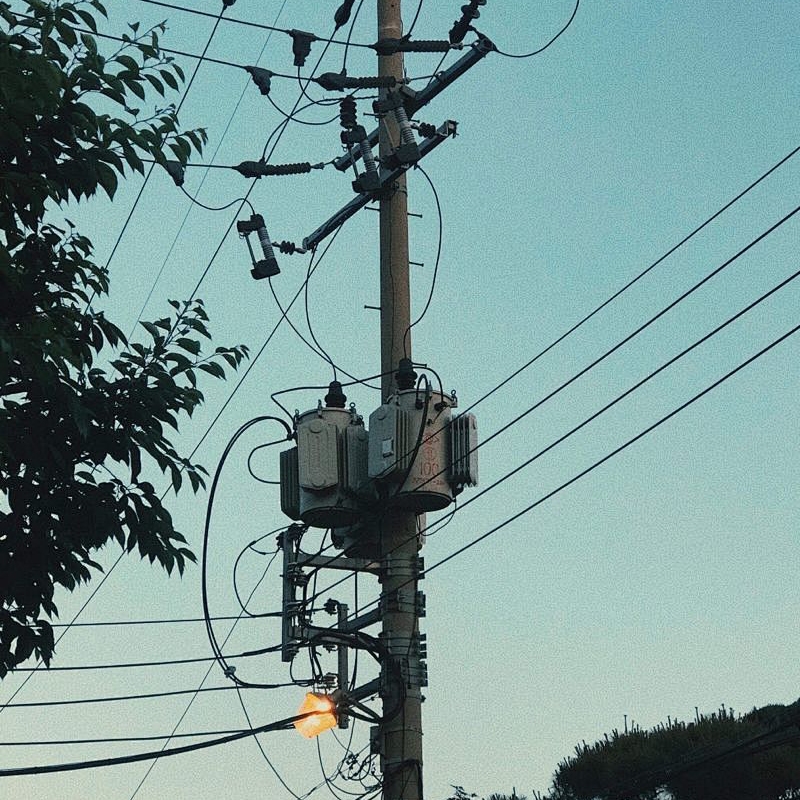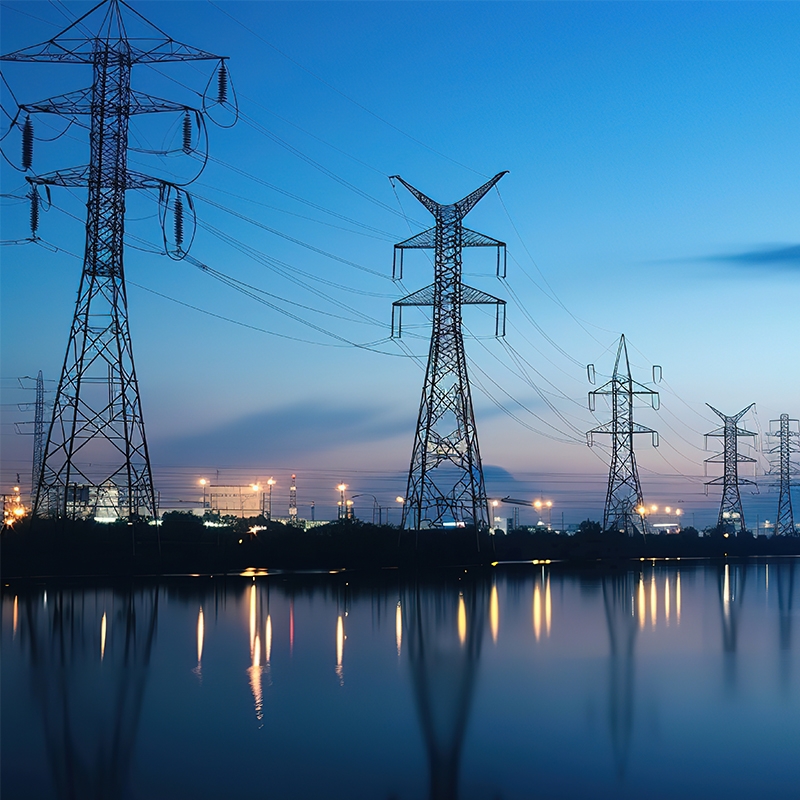Transformer protection mode introduction
The abnormal working state of the transformer mainly includes overload, overcurrent caused by external short circuit, neutral overvoltage caused by external short circuit, oil level reduction caused by oil leakage from the tank, or temperature rise caused by cooling system failure. In addition, the high capacity transformer, due to its high rated working flux density, the working magnetic density is directly proportional to the voltage frequency ratio, when operating under overvoltage or low frequency, it may cause overexcitation failure of the transformer. In view of the above situation, large transformers generally use the following protection methods:
First, gas protection: protect the fault of the transformer internal short circuit and oil level reduction.
Second, differential protection, electrical flow rate break protection: protect the transformer winding or the phase of the lead line of the interphase short circuit, the grounding short circuit of the large grounding current system and the winding turn to turn short circuit.
Third, overcurrent protection: to protect the external phase short circuit, and as gas protection and differential protection (or electrical flow protection) backup protection.
Fourth, zero sequence current protection: protect the external single-phase grounding short circuit of the large grounding current system.
5, overload protection: protect symmetrical overload, only on the signal.
Overexcitation protection: the overexcitation of the protection transformer does not exceed the allowable limit.
Transformer gas protection reflects various faults and lower oil level in transformer tank. The oil immersed transformer of 0.8MVA and above and the oil immersed transformer of 0.4MVA and above in the workshop should be equipped with gas protection. When the fault in the tank produces slight gas or the oil level drops, it should act on the signal instantaneously; When a large amount of gas is generated, the circuit breaker on each side of the transformer should be disconnected. Gas protection should also be installed for the oil immersed transformer with load regulation.
Transformers generally use protection mode two: longitudinal differential protection or current velocity break protection
Longitudinal differential protection or current velocity break protection for reaction transformer's lead line, bushing and internal short circuit fault. Protect the instantaneous operation of the circuit breakers on each side of the transformer.
1. For factory transformers below 6.3MVA and transformers running side by side, as well as factory spare transformers below 10MVA and transformers running separately, when the backup protection time is greater than 0.5s, the current current break protection should be installed.
2. For 6.3MVA and above factory working transformers and parallel operation transformers, 10MVA and above factory spare transformers and independent operation transformers, and 2MVA and above power flow rate break protection sensitivity does not meet the requirements, should be installed with longitudinal differential protection.
3. The transformer with a voltage of 330kV and above on the high voltage side can be equipped with double longitudinal differential protection.
4. For the generator transformer group, when there is a circuit breaker between the generator and the transformer, the generator is equipped with a separate longitudinal differential protection. When there is no circuit breaker between the generator and the transformer, the generator and transformer group of 100MVA and below share the longitudinal differential protection; More than 100MVA generator. In addition to the common longitudinal differential protection of the generator transformer, the generator should also be equipped with separate longitudinal differential protection. For the 200~300MVA generator transformer group, a separate longitudinal differential protection can be added to the transformer, that is, double fast protection.
The reaction transformer external phase short-circuit and gas protection and longitudinal differential protection (or current current break protection) backup overcurrent protection, low voltage start overcurrent protection, compound voltage start overcurrent protection, negative sequence current protection and impedance protection, after the protection action should be a time limit action in tripping.
1, overcurrent protection should be used for step-down transformers.
2, the overcurrent protection of composite voltage starting is suitable for step-up transformers, system liaison transformers and step-down transformers where over-current protection does not meet the sensitivity requirements. 3, negative sequence current and single-phase low voltage starting overcurrent protection, can be used for 63MVA and above boost transformers.
4, when the use of the above 2, 3 protection can not meet the sensitivity and selectivity requirements, impedance protection can be used. Common transformer protection mode four: zero sequence current protection reflects the zero sequence current protection of the transformer external grounding short circuit in the large ground current system. In the 110kV and above high ground current system, if the neutral point of the transformer may be grounded, zero sequence current protection should be installed for the step-up transformer or step-down transformer with two or three sides of the power supply, as the backup protection of the transformer main protection, and as the backup protection of adjacent components.
What is zero sequence current protection
The device that uses the zero sequence current generated when grounding to make the protective action is called zero sequence current protection. The special zero sequence current transformer is used in the cable line to achieve ground protection. The zero sequence current transformer is set on the three-core cable, and the current relay is connected to the secondary coil of the transformer. In normal operation or without ground fault, the current of the secondary coil of the zero sequence current transformer is also zero (only a small unbalance current), so the current relay does not operate. When a ground fault occurs, a large current will appear in the secondary coil of the zero sequence transformer, causing the current relay to operate in order to signal or remove the fault.
Transformer common protection mode five: overload protection
Overload protection for symmetrical overload of reaction transformer. For 400kVA and above transformers, when the number of units are running side by side or separately and as a backup power supply for other loads, overload protection should be installed according to the possible overload situation. For autotransformers and multi-winding transformers, the protection device should be able to reflect the situation of common winding and side overload. The overload current of the transformer, in most cases, is three-phase symmetric, so the overload protection as long as the access of a phase of current, current relay to achieve, and over a certain delay acting on the signal. When choosing which side to install the protection, consider that it can reflect the overload of all the side coils of the transformer. In the substation without regular duty personnel, overload protection can be activated by tripping or disconnecting part of the load if necessary.
Transformer protection mode six: overexcitation protection
Overexcitation protection of reaction transformer overexcitation.
In the current large transformer design, in order to save materials, reduce costs, and reduce transportation weight, the rated working magnetic flux density of the core is designed to be higher, about 1.7~ 1.8T, close to the saturation magnetic density (1.9~ 2T), so in the case of overvoltage, it is easy to generate overexcitation. In addition, because the magnetization curve is relatively "hard", in the overexcitation, due to the saturation of the core, the excitation impedance decreases, and the excitation current increases very quickly, when the working magnetic density reaches 1.3 to 1.4 times the normal magnetic density, the excitation current can reach the rated current level. Secondly, because the excitation current is non-sine wave and contains many high-order harmonic components, and the eddy current loss of the core and other metal components is proportional to the square of the frequency, it can cause serious overheating of the core, metal components and insulation materials, and if the over-excitation multiple is high and the duration is too long, the transformer may be damaged. Therefore, the transformer with a high voltage side of 500kV should be equipped with overexcitation protection.
The purpose of the installation of transformer overexcitation protection is to detect the overexcitation of the transformer, send a signal or act on the trip in time, so that the overexcitation of the transformer does not exceed the allowable limit, and prevent the transformer from being damaged due to overexcitation.




